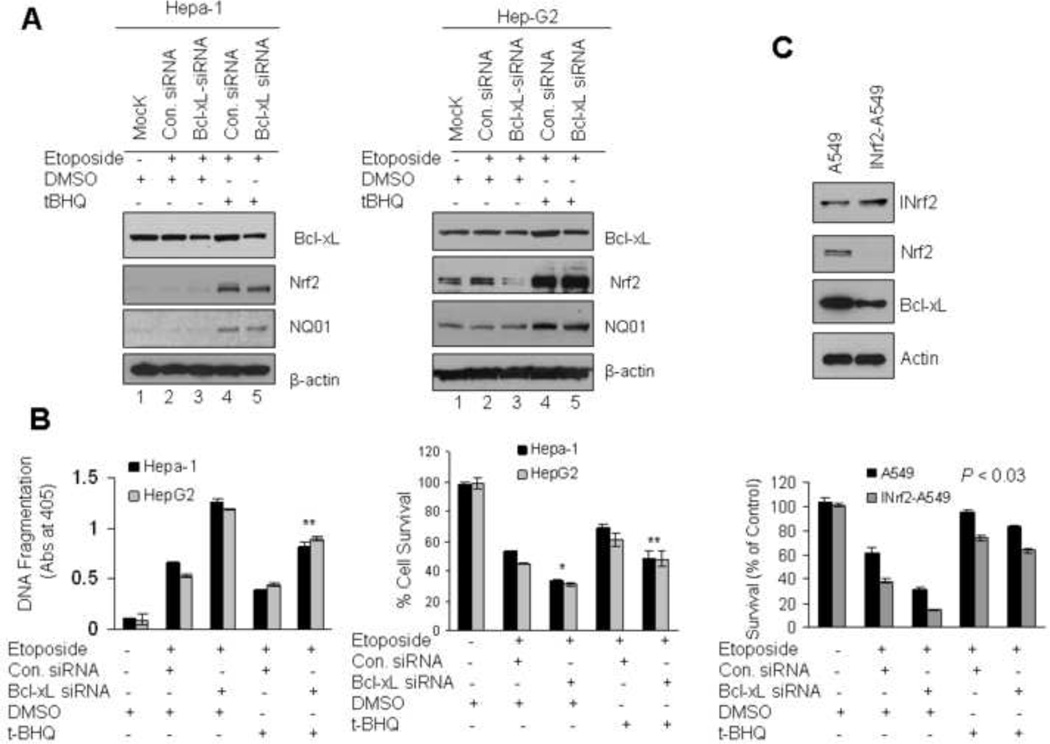Fig. 9.
Nrf2-mediated up-regulation of Bcl-xL enhanced cell survival and drug resistance. (A) Western analysis. Hepa-1 and HepG2 cells were untransfected (Mock) or transfected with control siRNA (50 nM) or Bcl-xL siRNA (50 nM) for 24h and treated with DMSO or tBHQ in presence of etoposide (Hepa-1; 30 µM, HepG2; 25µM) for additional 30h as indicated in figures. Eighty micrograms of cell extracts were immunoblotted with anti-Nrf2, Bcl-xL, anti-NQO1 and anti β-actin antibodies. (B) Cell death/DNA fragmentation assay. Five thousand Hepa-1 and same number of HepG2 cells were plated in 24 well plates and transfected/treated as indicated in “A”. The cytoplasmic histone-associated DNA fragments (mono and oligonucleosomes) were quantified using Cell Death Detection ELISA kit (Roche) and plotted (left panel). Similarly, after transfections/treatments Hepa-1 and Hep-G2 cells were incubated with fresh MTT solution for 2h at 37°C and absorbance at 570 nm was measured. The experiment was repeated thrice. Each point represents a mean ± SD and normalized to the value of the corresponding control cells.(C) Western blotting. Lysates from A549 cells expressing mutant INrf2 and cDNA derived wild type INrf2 (INrf2-A549) were immunoblotted with anti-INrf2, Nrf2, Bcl-xL and actin antibodies (upper panel). Clonogenic cell survival assay. In related experiments, A549 and INrf2-A549 cells also transfected with Bcl-xL siRNA or control siRNA, treated with etoposide (15 µM) in presence of DMSO or tBHQ for 30 h (lower panel). Cell were trypsinized, 1000 cells were reseeded in 100 mm tissue culture dishes (in triplicate) and incubated for 9 days and clonogenic cell survival assay was performed as described in methods section. Each data point represents a mean ± SD and normalized to the value of the corresponding control cells.

